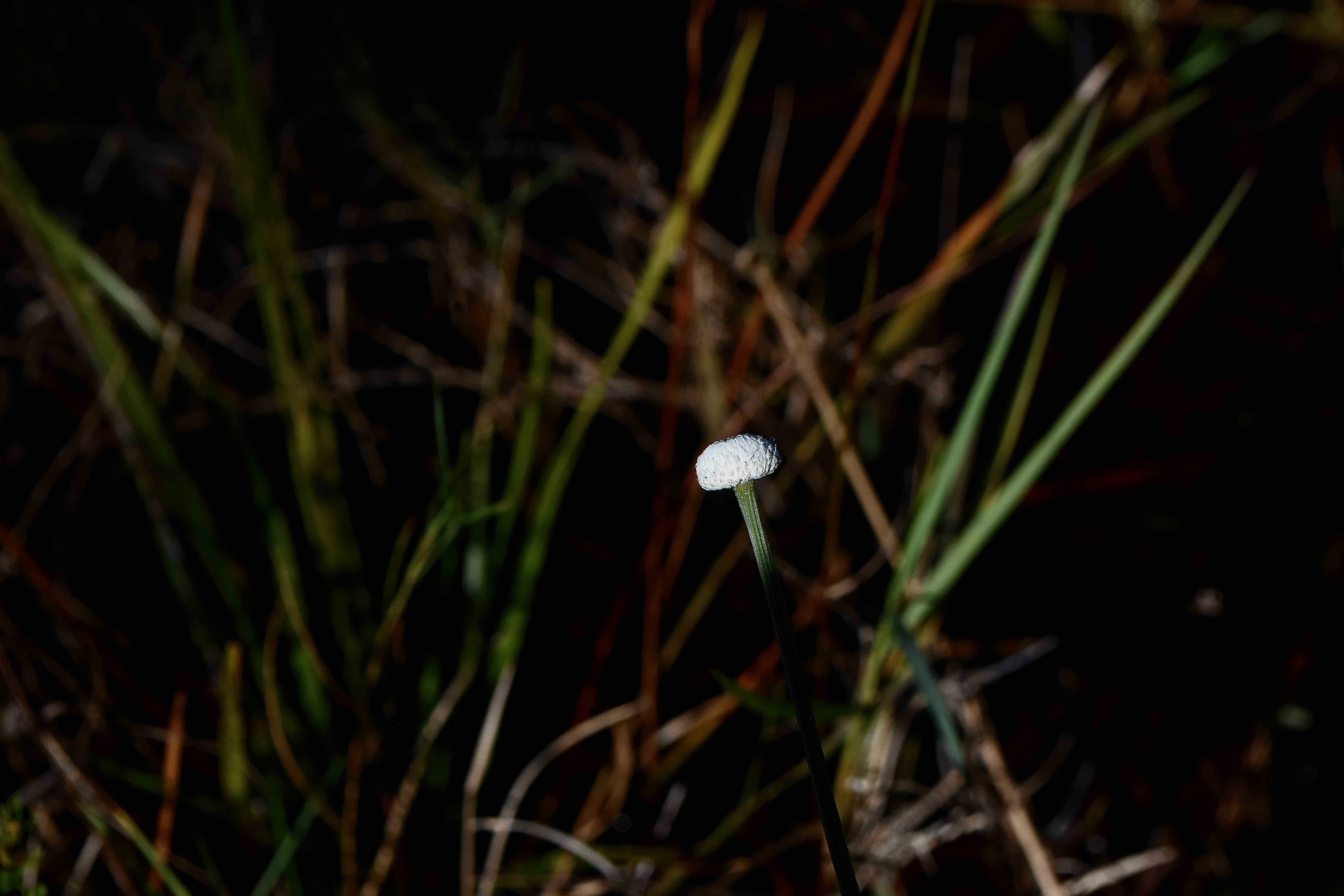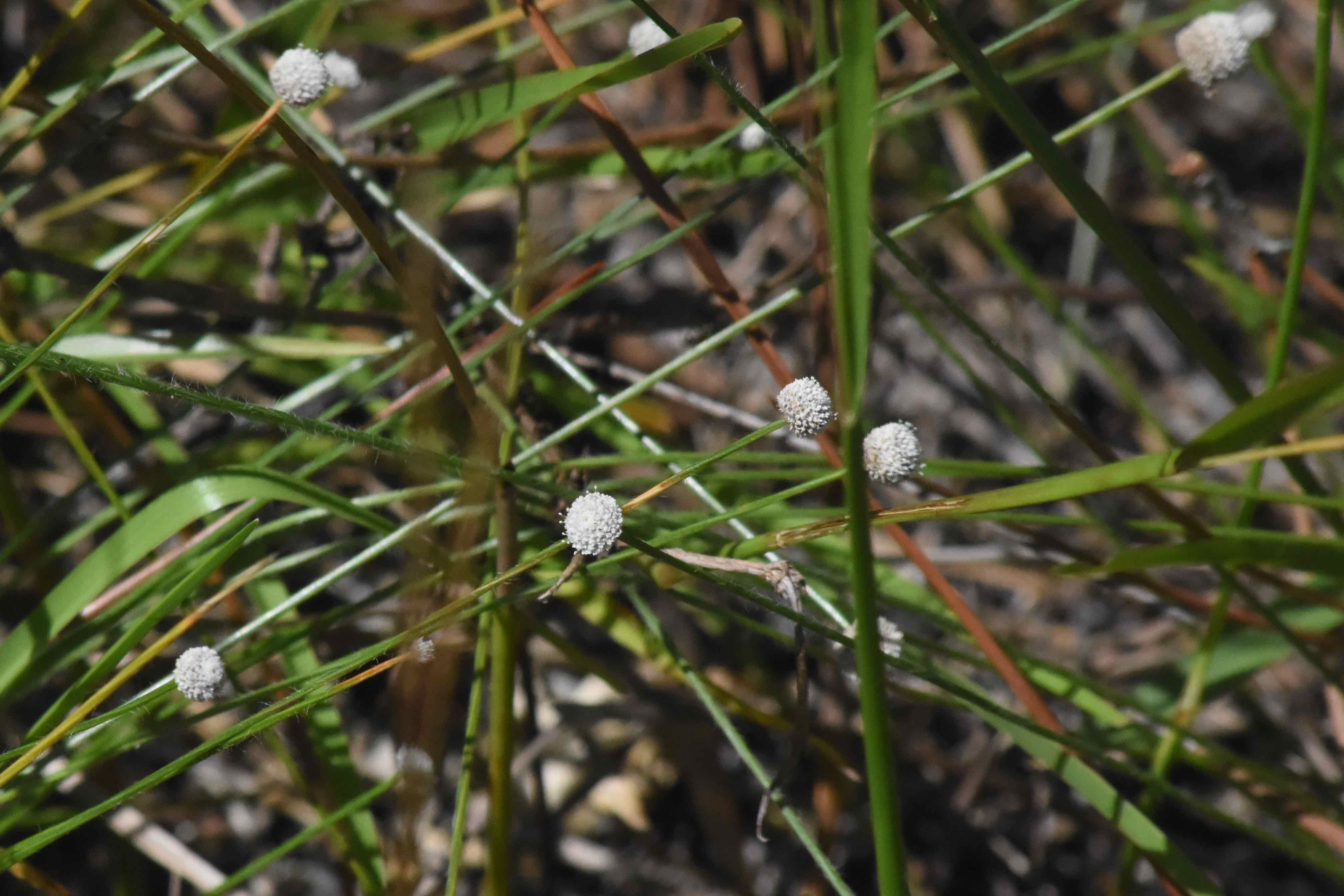
Tenangle pipewort, photographed at Jonathan Dickinson State Park, Hobe Sound, Martin County, in November 2021.
The inspiration for the name, tenangle pipewort, seems a bit of a mystery until one gets an up close and personal look at the plant and its ribbed scape, or flower stem. It’s those ribs, most often numbering 10. No mystery, no obscure feature that requires a trained eye to spot. Right there out in the open.
Scientifically known as Eriocaulon decangulare, tenangle pipewort is a Florida native found in wet habitats throughout most of the state. It’s absent from Monroe County and a handful of others.
Its natural range extends as far north as Pennsylvania and New Jersey and as far west as Oklahoma and Texas, but it’s mainly found throughout the southeastern states. It also has a toehold in Central America.
The Institute for Regional Conservation considers tenangle pipewort rare within the bounds of South Florida, but it’s not considered threatened or endangered by any agency. It is listed as threatened in Maryland and is considered imperiled or critically imperiled in Arkansas.
The salt-and-pepper flower head of tenangle is by far its most outstanding feature. In fact, it might be its only visible feature other than the aforementioned scape. It is a wetland plant that, at minimum, requires wet soils, but it often grows in standing water, its leaves submerged. It stands between one and three feet tall, most of which is that pipe-like stem.
The flowerhead itself is shaped like a small marsh mellow, a half-inch to three-quarters of an inch across. Each head isn’t a single flower but rather a multitude of flowers. As we mentioned above, they have a salt-and-pepper look, mostly white but dotted with black, which are anthers, the part of the flower containing pollen. A single plant might have a dozen or more flowerheads. The leaves are grass-like and concentrated at the base of the plant.
Favored habitats include wet pine flatwoods, ditches and the edges of cypress swamps.
Tenangle pipewort is what’s known in the botanical world as an isoetid. One of the characteristics of isoetids is a root mass that’s larger than normal in proportion to the foliage. While most plants take in carbon dioxide through their leaves, isoetids can take in the gas through their roots, which gather CO2 produced by bacteria working on decomposing organic matter. The stems have hollow chambers that allow the gas to move into the leaves for photosynthesis, the process by which plants produce the foods they need to survive. Oxygen, the “waste” product of the process is “exhaled” via the roots.
Tenangle pipewort doesn’t have many uses for us humans but the flowerheads are used in floral arrangements. We suspect it could also be used in wet gardens and along the edges of ponds and lakes, assuming it can be found for sale at a commercial nursery.
Tenangle has two cousins found in the wilds of South Florida, both of which have similar looking flowerheads. The looks are close enough that their common names are often used interchangeably.
Tenangle pipewort is a member of Eriocaulaceae, the pipewort family.



